
– By Muskaan Garg
– Intern IPPCS’21
– Student of Symbiosis Law School, Pune
Introduction
Cyber espionage is an activity of intrusion via cyberspace with the intent of non-authorised exploiting or spying upon , digitally protected data of the other party. This form of cyber-intrusion distinguishes it from its conventional counterpart by greatly enjoying the geographical and physical independence of the activity as it requires no physical presence of man or device at the target point. At international levels, cyber espionage can be performed by both state and non-state actors and follows no boundary limitations.
Historical aspect: the first case of cyber espionage dates back to 1986 wherein the US military base system was attacked by a German hacker for military secrets. ‘Moonlight Maze’ in 1999, against the US government, was one of the first attacks to be bring cyber espionage to limelight. After the beginning, various attempts and attacks have been witnessed and might still be underway.
Early literature focusses on cyber espionage as information warfare and whether the principles of international law are applicable to it. This article considers the status of law on cyber espionage intervention within international law.
Legality of cyber espionage intervention
Cyber espionage is the modernized form of espionage activities which are prohibited in domestic laws. But such prohibition is not merely enough to deem similar at international levels as subject to domestic laws are not states but individuals.
Rule 32 of the Schmitt 2017 states that peacetime cyber espionage is not per se regulated by international law. Rather, it is the manner (i.e., the methods) in which cyber espionage operations are conducted that may violate international law and, when considering how these rules apply to cyber operations, the Tallinn Manual 2.0 often uses cyber espionage as an example. However, there is no consensus on what “methods” used to conduct cyber espionage may violate certain rules of international law.
Cyber Espionage as self-defence: This argument states that cyber espionage is an element of self-defence and follows the doctrine of necessity in the times of no trust amongst nations. Article 51 of the UN Charter permits the right of self-defence in forms of anticipatory and pre-emptive self-defence, thereby cyber espionage would fall in this category only if the attack is of defensive nature without any aggressive intentions towards the target. The incident named ‘Gary powers U2’ is a congruent example wherein the US planes flew over soviet territory on espionage missions and got shot down. The US later clarified that their intent was solely defensive and there was no intent of aggravation. Hence, it is the nature of the attack and intention of the attacker which decides if cyber espionage could be considered as an element of self-defence.
Principle of non-intervention and article 2(4) of UN charter: The principle of non-intervention states that sovereign states should not intervene in each other’s internal affairs while Article 2(4) prohibits the use of armed force. According to this, cyber espionage might not be considered as the use of armed force, but could be very well considered as intervening in a sovereign state.
It is argued that cyber espionage does not cause any damage or sabotage immediately but provides information which can be used to put together an armed conflict against the target. Thereby, it supports the use of armed force and could be considered to also violate Article 2(4). A counter argument states that the charter does not define ‘use of force’ in specific terms which makes it difficult to match the contents of cyber espionage and contextualise in context to the Charter. There is also a parameter of unfriendly behaviour wherein such actions are considered detrimental by states but they do not surpass the threshold of force and do not per se breach any specific international norm which stands binding. Hence, it depends on the intensity and damage caused by the specific act of cyber espionage in question in order to ascertain whether it violates the ‘use of force’ clause.
Breach of principle of sovereignty of state and territory: if the law assumes that cyberspace is subject to sovereignty then cyber-espionage becomes a violation of the principle of sovereignty due to its nature of gaining unauthorized access into the systems within the territory and sovereignty of state. In this case the state may exercise complete control over the cyber infrastructure and activities surrounding it. But if this assumption is disregarded by law, then the control of cyber space and its activities are not bound to any specific legal structure as of now.
Beyond this cyber espionage lacks the aspect of physical dimension and is thereby an unauthorized virtual trespass but the work done is equivalent to an agent who breaks into a government office to exploit information. Hence the method might differ but the intent and result is similar to conventional attacks.
Issues and recommendations with regard to cyber espionage
Cyber espionage is as such not strictly prohibited in action by the international law but such activities are to be individually tried and judged on a case-to-case basis. Thus, International law yet has no binding law preventing cyber espionage but through the discussions there have been several highlighted issues and recommendations while tackling the legality of cybersphere and cases of cyber espionage.
One of the main advantages for the intruders is that they can run their actions through a chain of intermediaries located in various third states, making it difficult to track an intrusion to its original source. Therefore, a retaliation by the victim state is improbable. There might be diplomatic or other political reasons to suspect specific states to be behind the cyber espionage, but it would be difficult to provide sufficient material to technically attribute a state to a specific case of cyber espionage. The difficulty in defining the location, nature and substance of cyberspace creates is a major cause of the disagreements as to whether cyberspace is subject to state sovereignty or not.
Cyberspace is claimed to be a space unregulated or only partly regulated by law. If this were to be absolutely true then the discussion would conclude with the climax that cyber espionage is not prohibited. Whereas, agreeing with an independent cyberspace not being subject to state sovereignty or international law, puts to an end the discussion of extraterritorial data intrusions by states, since no state has a cyber territory. Hence, formulating a legal model fit for international cybersphere and its member nations, keeping in mind the underlying and the upcoming challenges with regard to the cyberspace and its tributaries.
The Tallinn manual is a research initiative published by Cambridge university press in the year 2013, which addresses the most severe cyber operations. This has over time gained recognition and has become an influential resource for policy experts dealing with cyber issues. The manual was updated in 2017 by the name of Tallinn manual 2.0. In the year 2021, the project of Tallinn manual 3.0 has been launched which is a five-year venture involving revision and exploration to pace it up with the emerging issues and resolutions. The nature of the manual will continue to be a non-legally-binding, scholarly document intended to provide an objective of international law applied to the cybersphere until it is given the status of a binding statue, or is descripted into a treaty for equal application.
Conclusion
Thereby, with the above readings, it is realized that technology has paced ahead of policy making in the domain of cyber sphere. Cyber war’s greater ability to deploy latent disruptive capabilities and a greater ability to conduct surveillance will make guidelines to determine the propriety of this type of conduct increasingly important in years to come. On a broader level, any proposals should account for the huge social and economic value inherent in cooperation, as exemplified by the success of the internet’s federated but cooperative architecture. At the same time, they should recognize how a lack of alignment in underlying interests, the increase in the number of participants, and the reduced ability to verify others’ compliance have the tendency to cause cooperation to break down. In the absence of such cooperation, nation-states may use lawfare as a tool of obstruction in the course of waging total war.
References
- https://www.oxfordbibliographies.com/view/document/obo-9780199796953/obo-9780199796953-0212.xml
- S J. Shackelford, Managing Cyber Attacks in International Law, Business and Relations: In Search of Cyber Peace (1st edition Cambridge University Press, UK 2014) 53.
- J P. Barlow, ‘A Declaration of the Independence of Cyberspace’ (1998) accessed 3 March 2014.
- Baker (n 114); Demarest (n 112)
- https://scholarship.law.upenn.edu/cgi/viewcontent.cgi?article=2541&context=faculty_scholarship




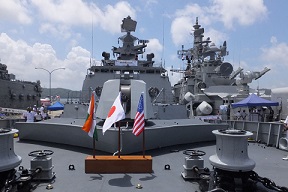
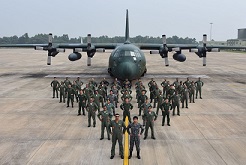





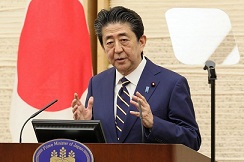
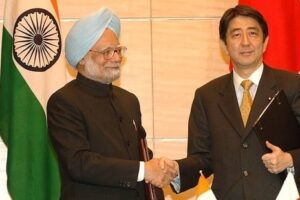

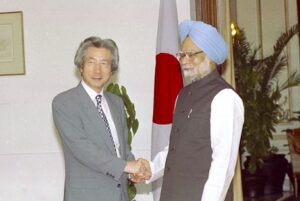

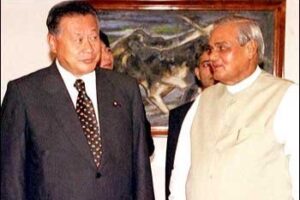





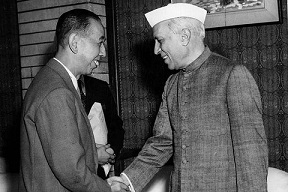








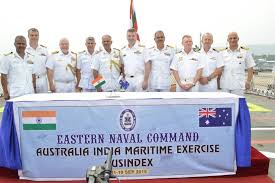







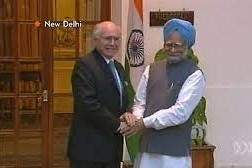





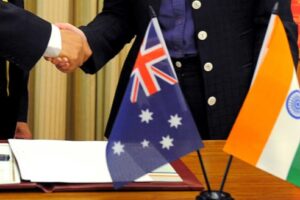



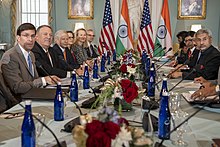



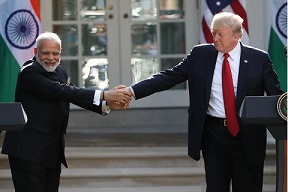


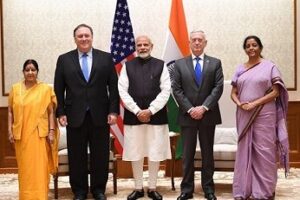



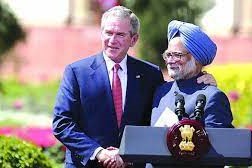
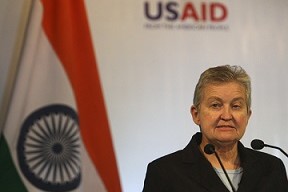
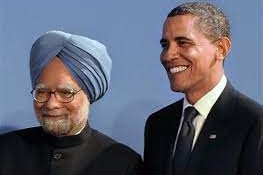



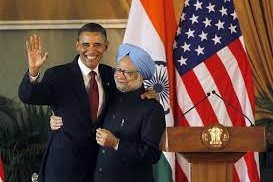





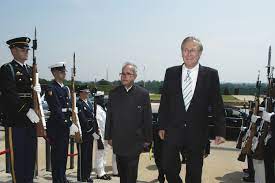




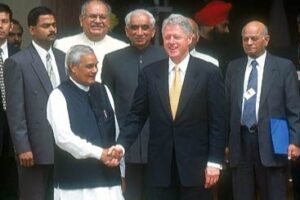


 onducted a total of five underground nuclear tests, breaking a 24-year self-imposed moratorium on nuclear testing. Pakistan followed, claiming 5 tests on May 28, 1998, and an additional test on May 30. The unannounced tests created a global storm of criticism, as well as a serious setback for decades of U.S. nuclear nonproliferation efforts in South Asia. On May 13, 1998, President Clinton imposed economic and military sanctions on India, mandated by Section 102 of the Arms Export Control Act (AECA), and applied the same sanctions to Pakistan on May 30. Some effects of the sanctions on India included: termination of $21 million in FY1998 economic development assistance; postponement of $1.7 billion in lending by the International Financial Institutions (IFI), as supported by the Group of Eight (G-8) leading industrial nations; prohibition on loans or credit from U.S. banks to the government of India; and termination of Foreign Military Sales under the Arms Export Control Act. Humanitarian assistance, food, or other agricultural commodities are excepted from sanctions under the law.
onducted a total of five underground nuclear tests, breaking a 24-year self-imposed moratorium on nuclear testing. Pakistan followed, claiming 5 tests on May 28, 1998, and an additional test on May 30. The unannounced tests created a global storm of criticism, as well as a serious setback for decades of U.S. nuclear nonproliferation efforts in South Asia. On May 13, 1998, President Clinton imposed economic and military sanctions on India, mandated by Section 102 of the Arms Export Control Act (AECA), and applied the same sanctions to Pakistan on May 30. Some effects of the sanctions on India included: termination of $21 million in FY1998 economic development assistance; postponement of $1.7 billion in lending by the International Financial Institutions (IFI), as supported by the Group of Eight (G-8) leading industrial nations; prohibition on loans or credit from U.S. banks to the government of India; and termination of Foreign Military Sales under the Arms Export Control Act. Humanitarian assistance, food, or other agricultural commodities are excepted from sanctions under the law. 
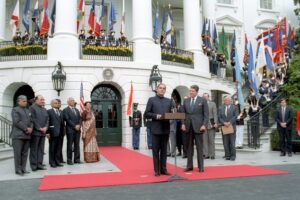






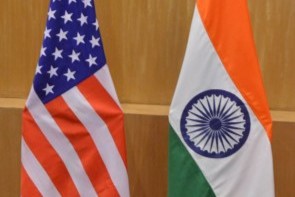








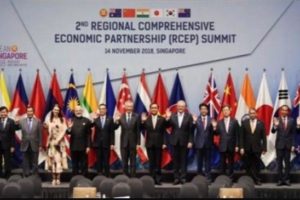 The first ministerial level meeting of QUAD was held on the sidelines of the United Nations General Assembly in New York. Before this, the QUAD had
The first ministerial level meeting of QUAD was held on the sidelines of the United Nations General Assembly in New York. Before this, the QUAD had AusIndEx is an exercise between India and Australia which was first held in 2015.The Australian
AusIndEx is an exercise between India and Australia which was first held in 2015.The Australian 







 On recommendations of the Japanese government, the four countries met at Manila, Philippines for ASEAN Regional Forum (ARF) originally, but also ended up having a meeting of what we call the first meeting of four nation states on issues of
On recommendations of the Japanese government, the four countries met at Manila, Philippines for ASEAN Regional Forum (ARF) originally, but also ended up having a meeting of what we call the first meeting of four nation states on issues of  On his official visit to India, Japanese PM Mr. Shinzo Abe reinforced the ties of two nations, i.e., Japan and India with his famous speech about
On his official visit to India, Japanese PM Mr. Shinzo Abe reinforced the ties of two nations, i.e., Japan and India with his famous speech about  In 2007, Japanese President Shinzo Abe resigned from his post citing health reasons. This had a significant impact on QUAD as he was the architect & advocate of QUAD. His successor, Yasuo Fukuda, did not take up QUAD with such zeal leading to dormancy of the forum. (
In 2007, Japanese President Shinzo Abe resigned from his post citing health reasons. This had a significant impact on QUAD as he was the architect & advocate of QUAD. His successor, Yasuo Fukuda, did not take up QUAD with such zeal leading to dormancy of the forum. ( Japan earthquake and tsunami of 2011, also called Great Sendai Earthquake or Great Tōhoku Earthquake, was a 9.0 magnitude earthquake which struck below the floor of the Western Pacific at 2:49 PM. The powerful earthquake affected the northeastern coast of Honshu, Japan’s main island, and also initiated a series of large tsunami waves that devastated coastal areas of Japan, which also led to a major nuclear accident. Japan received aid from India, US, Australia as well as other countries. US Navy aircraft carrier was dispatched to the area and Australia sent search-and-rescue teams.
Japan earthquake and tsunami of 2011, also called Great Sendai Earthquake or Great Tōhoku Earthquake, was a 9.0 magnitude earthquake which struck below the floor of the Western Pacific at 2:49 PM. The powerful earthquake affected the northeastern coast of Honshu, Japan’s main island, and also initiated a series of large tsunami waves that devastated coastal areas of Japan, which also led to a major nuclear accident. Japan received aid from India, US, Australia as well as other countries. US Navy aircraft carrier was dispatched to the area and Australia sent search-and-rescue teams.  India and Australia signed the
India and Australia signed the  The India-Japan Agreement for Cooperation in the Peaceful Uses of Nuclear Energy was signed on 11 November, 2016 and came into force on 20 July, 2017 which was representative of strengthening ties between India and Japan. Diplomatic notes were exchanged between Dr. S. Jaishankar and H.E. Mr. Kenji Hiramatsu, Ambassador of Japan to India. (
The India-Japan Agreement for Cooperation in the Peaceful Uses of Nuclear Energy was signed on 11 November, 2016 and came into force on 20 July, 2017 which was representative of strengthening ties between India and Japan. Diplomatic notes were exchanged between Dr. S. Jaishankar and H.E. Mr. Kenji Hiramatsu, Ambassador of Japan to India. ( The foreign ministry
The foreign ministry The Officials of QUAD member countries met in Singapore on November 15, 2018 for consultation on regional & global issues of common interest. The main discussion revolved around connectivity, sustainable development, counter-terrorism, maritime and cyber security, with the view to promote peace, stability and prosperity in the
The Officials of QUAD member countries met in Singapore on November 15, 2018 for consultation on regional & global issues of common interest. The main discussion revolved around connectivity, sustainable development, counter-terrorism, maritime and cyber security, with the view to promote peace, stability and prosperity in the  The 23rd edition of trilateral Malabar maritime exercise between India, US and Japan took place on 26 September- 04 October, 2019 off the coast of Japan.
The 23rd edition of trilateral Malabar maritime exercise between India, US and Japan took place on 26 September- 04 October, 2019 off the coast of Japan.  After the first ministerial level meeting of QUAD in September, 2019, the senior officials of US, Japan, India and Australia again met for consultations in Bangkok on the margins of the East Asia Summit. Statements were issued separately by the four countries. Indian Ministry of External Affairs said “In statements issued separately by the four countries, MEA said, “proceeding from the strategic guidance of their Ministers, who met in New York City on the sidelines of the UN General Assembly recently, the officials exchanged views on ongoing and additional practical cooperation in the areas of connectivity and infrastructure development, and security matters, including counterterrorism, cyber and maritime security, with a view to promoting peace, security, stability, prosperity in the Indo-Pacific region.”
After the first ministerial level meeting of QUAD in September, 2019, the senior officials of US, Japan, India and Australia again met for consultations in Bangkok on the margins of the East Asia Summit. Statements were issued separately by the four countries. Indian Ministry of External Affairs said “In statements issued separately by the four countries, MEA said, “proceeding from the strategic guidance of their Ministers, who met in New York City on the sidelines of the UN General Assembly recently, the officials exchanged views on ongoing and additional practical cooperation in the areas of connectivity and infrastructure development, and security matters, including counterterrorism, cyber and maritime security, with a view to promoting peace, security, stability, prosperity in the Indo-Pacific region.” US 2+2 Ministerial Dialogue was held on 18 December, 2019, in Washington DC. Secretary of State Michael R. Pompeo and Secretary of Defense Mark T. Esper will host Indian Minister of External Affairs Dr. S. Jaishankar and Minister of Defense Shri Rajnath Singh. The discussion focussed on deepening bilateral strategic and defense cooperation, exchanging perspectives on global developments, and our shared leadership in the Indo-Pacific region.The two democracies signed the Industrial Security Annex before the 2+2 Dialogue. Assessments of the situation in Afghanistan, Pakistan, Nepal, Sri Lanka, and the Indian Ocean region in general were shared between both countries. (
US 2+2 Ministerial Dialogue was held on 18 December, 2019, in Washington DC. Secretary of State Michael R. Pompeo and Secretary of Defense Mark T. Esper will host Indian Minister of External Affairs Dr. S. Jaishankar and Minister of Defense Shri Rajnath Singh. The discussion focussed on deepening bilateral strategic and defense cooperation, exchanging perspectives on global developments, and our shared leadership in the Indo-Pacific region.The two democracies signed the Industrial Security Annex before the 2+2 Dialogue. Assessments of the situation in Afghanistan, Pakistan, Nepal, Sri Lanka, and the Indian Ocean region in general were shared between both countries. ( The foreign ministers of QUAD continued their discussions from the last ministerial level meeting in 2019, on 6 October, 2020. While there was no joint statement released, all countries issued individual readouts. As per the issue readout by India, the discussion called for a coordinated response to the challenges including financial problems emanating from the pandemic, best practices to combat Covid-19, increasing the resilience of supply chains, and enhancing access to affordable vaccines, medicines and medical equipment. There was also a focus on maintaining stability in the Indo-Pacific region amidst growing tensions. Australian media release mentions “We emphasised that, especially during a pandemic, it was vital that states work to ease tensions and avoid exacerbating long-standing disputes, work to counter disinformation, and refrain from malicious cyberspace activity. Ministers reiterated that states cannot assert maritime claims that are inconsistent with international law, particularly the United Nations Convention on the Law of the Sea (UNCLOS).”
The foreign ministers of QUAD continued their discussions from the last ministerial level meeting in 2019, on 6 October, 2020. While there was no joint statement released, all countries issued individual readouts. As per the issue readout by India, the discussion called for a coordinated response to the challenges including financial problems emanating from the pandemic, best practices to combat Covid-19, increasing the resilience of supply chains, and enhancing access to affordable vaccines, medicines and medical equipment. There was also a focus on maintaining stability in the Indo-Pacific region amidst growing tensions. Australian media release mentions “We emphasised that, especially during a pandemic, it was vital that states work to ease tensions and avoid exacerbating long-standing disputes, work to counter disinformation, and refrain from malicious cyberspace activity. Ministers reiterated that states cannot assert maritime claims that are inconsistent with international law, particularly the United Nations Convention on the Law of the Sea (UNCLOS).”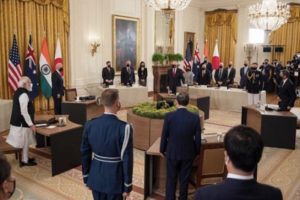 On September 24, President Biden hosted Prime Minister Scott Morrison of Australia, Prime Minister Narendra Modi of India, and Prime Minister Yoshihide Suga of Japan at the White House for the first-ever in-person Leaders’ Summit of the QUAD. The leaders released a Joint Statement which summarised their dialogue and future course of action. The regional security of the Indo-Pacific and strong confidence in the ASEAN remained on the focus along with response to the Pandemic.
On September 24, President Biden hosted Prime Minister Scott Morrison of Australia, Prime Minister Narendra Modi of India, and Prime Minister Yoshihide Suga of Japan at the White House for the first-ever in-person Leaders’ Summit of the QUAD. The leaders released a Joint Statement which summarised their dialogue and future course of action. The regional security of the Indo-Pacific and strong confidence in the ASEAN remained on the focus along with response to the Pandemic. 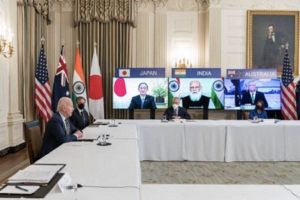 The QUAD Vaccine Partnership was announced at the first QUAD Summit on 12 March 2021 where QUAD countries agreed to deliver 1.2 billion vaccine doses globally. The aim was to expand and finance vaccine manufacturing and equipping the Indo-Pacific to build resilience against Covid-19. The launch of a senior-level QUAD Vaccine Experts Group, comprised of top scientists and officials from all QUAD member governments was also spearheaded.
The QUAD Vaccine Partnership was announced at the first QUAD Summit on 12 March 2021 where QUAD countries agreed to deliver 1.2 billion vaccine doses globally. The aim was to expand and finance vaccine manufacturing and equipping the Indo-Pacific to build resilience against Covid-19. The launch of a senior-level QUAD Vaccine Experts Group, comprised of top scientists and officials from all QUAD member governments was also spearheaded.  Although the Tsunami Core group had to be disbanded on fulfilment of its purpose, however the quadrilateral template that formed remained intact as a successful scaffolding of four countries, as stated by authors Patrick Gerard Buchan and Benjamin Rimland in their diplomatic brief about QUAD ( you can access the brief at
Although the Tsunami Core group had to be disbanded on fulfilment of its purpose, however the quadrilateral template that formed remained intact as a successful scaffolding of four countries, as stated by authors Patrick Gerard Buchan and Benjamin Rimland in their diplomatic brief about QUAD ( you can access the brief at  Secretary of State Colin Powell stated that the Core Tsunami Group was to be disbanded and folded and clubbed with the broader United Nations led Relief Operations. In a Tsunami Relief Conference in Jakarta, Secretary Powell stated that
Secretary of State Colin Powell stated that the Core Tsunami Group was to be disbanded and folded and clubbed with the broader United Nations led Relief Operations. In a Tsunami Relief Conference in Jakarta, Secretary Powell stated that 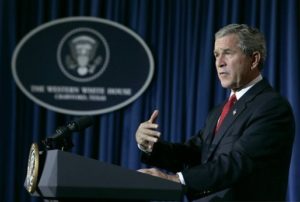 Soon after the Earthquake and Tsunami crisis, humanitarian reliefs by countries, viz., US, India, Japan, and Australia started to help the 13 havoc-stricken countries. The US initially promised $ 35 Millions in aid. However, on 29
Soon after the Earthquake and Tsunami crisis, humanitarian reliefs by countries, viz., US, India, Japan, and Australia started to help the 13 havoc-stricken countries. The US initially promised $ 35 Millions in aid. However, on 29 At 7:59AM local time, an earthquake of 9.1 magnitude (undersea) hit the coast of Sumatra, an Indonesian island. As a result of the same, massive waves of Tsunami triggered by the earthquake wreaked havoc for 7 hours across the Indian Ocean and to the coastal areas as far away as East Africa. The infamous Tsunami killed around 225,000 people, with people reporting the height of waves to be as high as 9 metres, i.e., 30 feet. Indonesia, Srilanka, India, Maldives, Thailand sustained horrendously massive damage, with the death toll exceeding 200,000 in Northern Sumatra’s Ache province alone. A great many people, i.e., around tens of thousands were found dead or missing in Srilanka and India, mostly from Andaman and Nicobar Islands of Indian territory. Maldives, being a low-lying country, also reported casualties in hundreds and more, with several non-Asian tourists reported dead or missing who were vacationing. Lack of food, water, medicines burgeoned the numbers of casualties, with the relief workers finding it difficult to reach the remotest areas where roads were destroyed or civil war raged. Long-term environmental damage ensued too, as both natural and man-made resources got demolished and diminished.
At 7:59AM local time, an earthquake of 9.1 magnitude (undersea) hit the coast of Sumatra, an Indonesian island. As a result of the same, massive waves of Tsunami triggered by the earthquake wreaked havoc for 7 hours across the Indian Ocean and to the coastal areas as far away as East Africa. The infamous Tsunami killed around 225,000 people, with people reporting the height of waves to be as high as 9 metres, i.e., 30 feet. Indonesia, Srilanka, India, Maldives, Thailand sustained horrendously massive damage, with the death toll exceeding 200,000 in Northern Sumatra’s Ache province alone. A great many people, i.e., around tens of thousands were found dead or missing in Srilanka and India, mostly from Andaman and Nicobar Islands of Indian territory. Maldives, being a low-lying country, also reported casualties in hundreds and more, with several non-Asian tourists reported dead or missing who were vacationing. Lack of food, water, medicines burgeoned the numbers of casualties, with the relief workers finding it difficult to reach the remotest areas where roads were destroyed or civil war raged. Long-term environmental damage ensued too, as both natural and man-made resources got demolished and diminished.
No responses yet